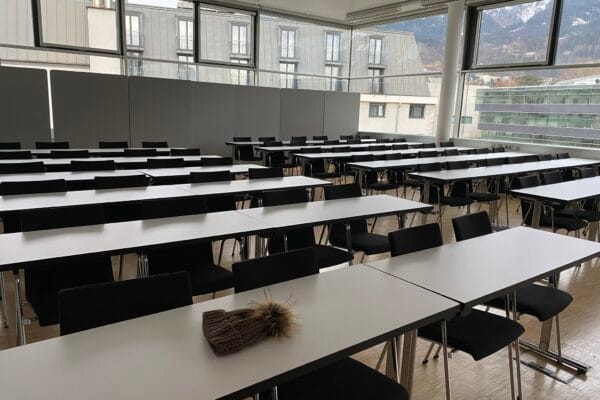
NAME:
MCI - Aula 301
BUILDING:
Management Center Innsbruck
FLOOR:
3
TYPE:
Lecture Room
CAPACITY:
66
ACCESS:
Only Participants
EQUIPMENT:
Blackboard, Beamer, Flipchart, PC, Sound System, WLAN (Eduroam), Handicapped Accessible
Damavand Mountain, north of Tehran, Iran, holds significant ecological and cultural value. Enhancing plant agro-biodiversity in this region is vital for sustainable development, benefiting both the environment and local communities. Agro-biodiversity in Damavand supports ecosystem services, strengthens local communities, and boosts food security. The diverse plant species found here contribute to various functional and phylogenetic diversities that can be leveraged for agricultural gain. Encouraging agro-biodiversity aids conservation efforts and aligns with international environmental standards to protect the region’s natural surroundings. Ways to Foster Agro-Biodiversity in Damavand: 1. Understanding the Agro-Ecological Context 2. Strategies for Promoting Agro-Biodiversity 3. Benefits of Agro-Biodiversity in Damavand 4. Challenges and Solutions 5. Community Involvement and Policy Support 6. Examples of Success: Examples include cultivating traditional medicinal plants like thyme, mint, and chamomile, which provide economic benefits while conserving biodiversity; integrating fruit trees such as apples and cherries with crops, enhancing soil health and farmers’ incomes; and promoting agro-tourism, which generates additional revenue for local communities while raising awareness of biodiversity conservation. Conclusion: Enhancing plant agro-biodiversity in Damavand Mountain is a comprehensive approach to achieving sustainable development. By merging traditional knowledge with modern practices, the region can boost ecological resilience, support local livelihoods, and preserve its cultural heritage. Collaborative efforts among farmers, policymakers, researchers, and the private sector are crucial for the long-term success of these initiatives.

We and use cookies and other tracking technologies to improve your experience on our website. We may store and/or access information on a device and process personal data, such as your IP address and browsing data, for personalised advertising and content, advertising and content measurement, audience research and services development. Additionally, we may utilize precise geolocation data and identification through device scanning.
Please note that your consent will be valid across all our subdomains. You can change or withdraw your consent at any time by clicking the “Consent Preferences” button at the bottom of your screen. We respect your choices and are committed to providing you with a transparent and secure browsing experience.